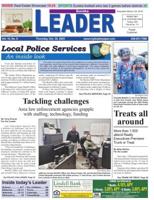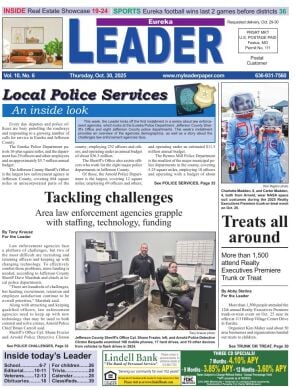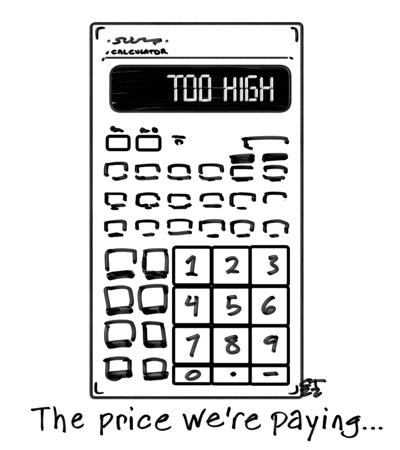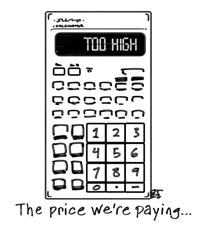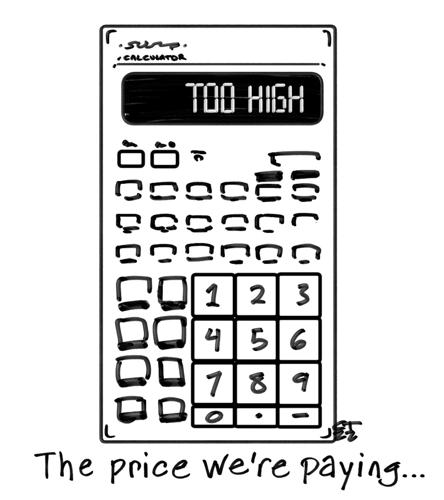The topic I am about to address makes me numb.
And that makes me mad.
Others have written in this space about the scourge of gun violence in the U.S. I feel compelled to add my voice because, of all the problems we face in America, none is worse than the epidemic of mass shootings – generally defined as three to five people killed or injured by an individual, using a firearm, in one place at one time.
Until recently, for us in Jefferson County, assaults like these happened “elsewhere” to “other people.”
That all changed Oct. 24 when 61-year-old P.E. teacher Jean Kuczka of Dittmer and a student were shot and killed at a high school in St. Louis.
Kuczka’s husband, Steve, is vice president of the Grandview R-2 Board of Education; her daughter, Abbey Kuczka, lives in De Soto and her son, Joe Kuczka, is a corporal for the Eureka Police Department.
It has touched my circle as well. My niece, a teacher in Arlington, Texas, saw her school get locked down when a campus shooter injured four 14 months ago.
These are not “other people.”
Let’s consider realistically where we have come from and where we are going. All I can do is ask a simple question.
Are mass shootings the price we pay as American citizens for the freedom to own and use firearms as we see fit?
Put another way, have we gone so far down this road that we find ourselves accepting that as the bleak truth? And does that affect what we decide to do, if anything?
Let me trace for you a grim timeline of how we got to this place and how this carnage has worsened over many years.
Older readers will remember the Texas Tower massacre in August 1966, when a deranged sniper, a former Marine, killed 15 people and injured 31 others from the top of the main building at the University of Texas in Austin.
Fast forward to July 18, 1984, when a gunman fatally shot 21 people and wounded 19 at a McDonald’s restaurant in San Diego. A stunned nation wondered, “Mass murder at McDonald’s – how could that happen?”
Fifteen years later came the horror of students murdering 12 of their classmates at Columbine High in Colorado. I remember coming home from work and my son Peter asking if I had heard the news. He was a senior in high school and could identify with those victims 800 miles away. So could I: Our best friends’ kids attended another school in the same district.
Numerous other shootings hit movie theaters, post offices, college campuses, churches, shopping malls, night clubs – no place was safe.
Then came the unimaginable: The Sandy Hook Elementary massacre in Newtown, Conn., on Dec. 14, 2012 – 10 years ago. Twenty children and six adults died in that attack. When I heard the news, I cried.
We may have thought it couldn’t get worse, but it did. On May 14, a racist gunman hunted down and murdered 10 Black people at a grocery store in Buffalo, and 10 days later 19 children and two teachers were slaughtered at Robb Elementary in Uvalde, Texas – while police waited 77 minutes to break through and kill the shooter. We respect and revere first responders, for whom bravery is instinctive. But we have learned it is not universal.
You get what I mean about going numb. One commentator I read recently said that once we were not shocked into action by Sandy Hook, the gun control debate was over. The cynic in me can’t disagree.
The Bipartisan Safer Communities Act, enacted by a Congress motivated by Uvalde, is the first federal action on gun regulation in almost 30 years. That’s worth celebrating. But the law only nibbles around the edges. The fundamental problem is easy access to an ocean of firearms. The best statistic of the many cited in the debate is this: Based on a 2015 study by Adam Lankford, a professor at the University of Alabama, the U.S. has 4.4 percent of the world’s population and 42 percent of the world’s guns (the numbers are undoubtedly bigger now).
If more guns carried by more people could make us more safe, wouldn’t we already be the safest country in the world?
For us journalists, all we need is a ready-made form. The next mass shooting will be (fill in the blank), leaving (blank) dead and (blank) injured. Not if, but when.
Numb.
A final thought. Going back several years, a few Leader readers have sent us letters arguing that mass shootings are indeed the price of liberty. My question for them is, what if the price is your son, daughter, father, mother, grandchild, sibling or spouse? Would you find that acceptable?
We are not powerless to effect meaningful change. The Second Amendment, expansively interpreted by the Supreme Court in 2008 and again this year, isn’t going anywhere anytime soon.
But the Court has left plenty of room for reasonable regulation. What’s lacking is the will to refuse to “pay the cost” and agree on actions that can save lives – perhaps, someday, yours or a loved one’s.
